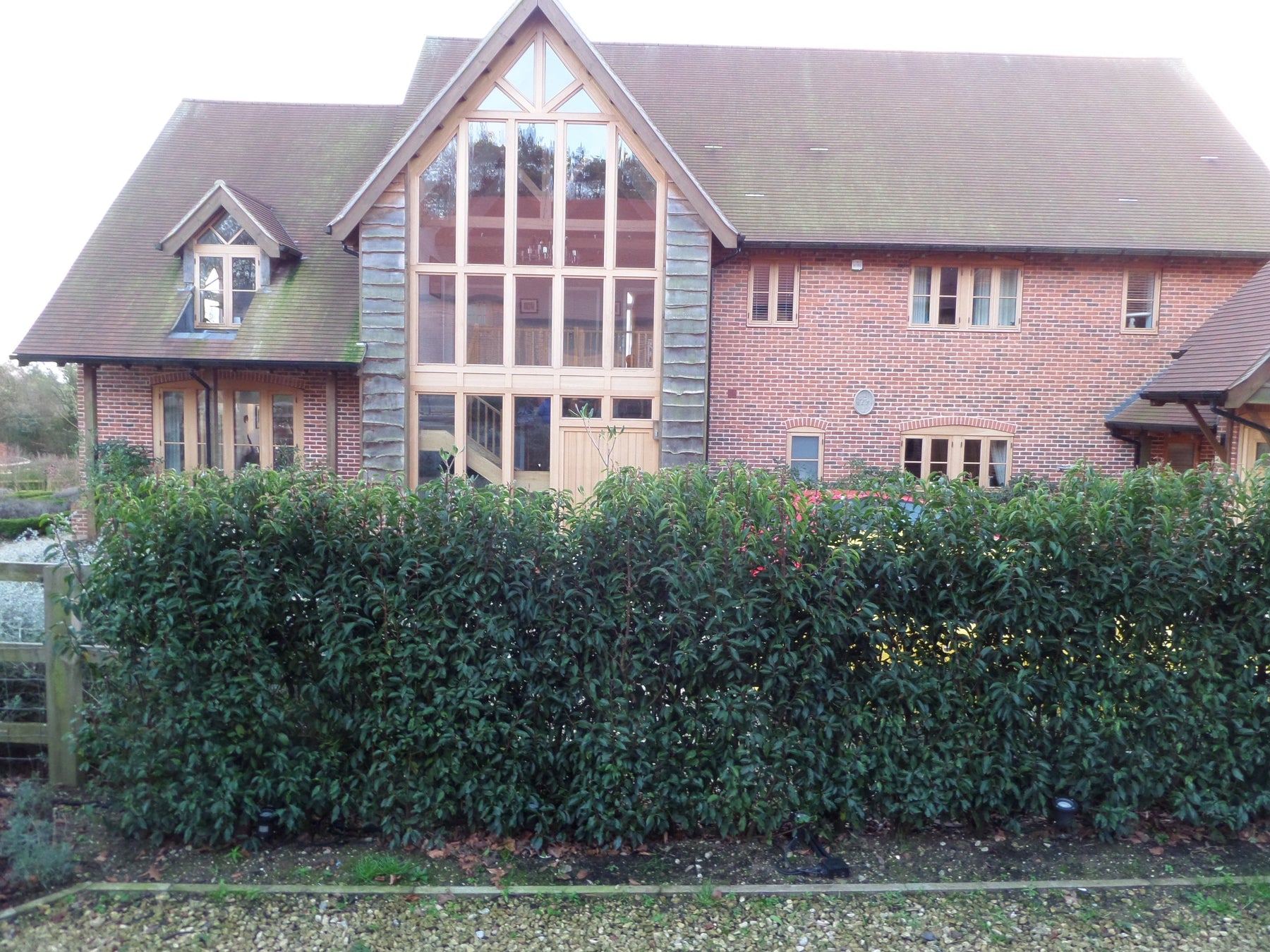
Hedge Recommendations: Why Buy Rootballed Portuguese Laurel?
When choosing the perfect hedge for your garden, it's essential to understand what you're trying to achieve. Are you looking for privacy? Do you want to screen off an unsightly view? Or perhaps you're simply trying to bring a more natural element to your garden instead of fence panels?
In this blog, we'll talk about one of our most popular hedging choices - Portuguese laurel. We'll cover what makes this plant special, why rootballed varieties offer exceptional value, how it compares to other hedging options, and practical advice on planting and maintenance to ensure your hedge thrives for years to come.
What Exactly Is Portuguese Laurel?
Portuguese laurel, officially known as Prunus lusitanica 'Angustifolia', is an exceptionally popular hedging choice, but it differs significantly from what most people think of as laurel (common laurel or cherry laurel).
While cherry laurel features large, light green, shiny leaves, Portuguese laurel has smaller, darker leaves, a denser growth habit and provides a neater, more formal appearance when clipped.
Portuguese laurel grows at an impressive rate of 30-40cm per year. While not as rapid as cherry laurel (which can grow up to 60cm annually), it's still fast enough to establish privacy within a reasonable timeframe, even when starting with smaller plants.
Find out more about the key differences between Portuguese and cherry laurel.

Rootballed vs. Bare Root vs. Container-Grown Portuguese Laurel
Bare Root Plants
For evergreen varieties like Portuguese laurel, we don't recommend bare root planting in home gardens. Unlike deciduous plants, evergreen bare roots can be temperamental and often result in high failure rates without specialist knowledge. For this reason, we don't sell bare root Portuguese laurel at Mathias Nurseries.
Container-Grown Plants
Container-grown Portuguese laurel plants are grown in pots throughout their life cycle. While they typically cost more than rootballed options, they offer certain advantages:
- Can be planted year-round, including summer months
- Experience less transplant shock when moved to your garden
- Come with their complete root system intact
- Generally easier for DIY gardeners to handle and plant
However, container-grown plants often have a less dense structure and may take longer to form a solid hedge compared to their rootballed counterparts.
Rootballed Plants
Rootballed Portuguese laurel offers exceptional value for money. These plants are:
- Field-grown and regularly trimmed
- Robust, chunky, and bushy
- Denser and more compact than container-grown alternatives
- Significantly less expensive than container-grown plants
- Quick to form a dense hedge once planted
The field-growing process creates a superior plant structure, as the regular trimming results in a denser, more compact form that establishes quickly when planted in your garden.
The Benefits of Rootballed Portuguese Laurel Hedging
Soil Compatibility and Growing Conditions
Portuguese laurel is remarkably versatile and will thrive in most soil types. The only condition it struggles with is very wet soil, which can cause leaves to pale and drop. If your garden has wet soil but you're determined to plant Portuguese laurel, it's best to plant in spring after the worst of the wet weather. You should allow a full summer of growth to establish substantial roots before the next wet season.
However, for the most part Portuguese laurel is highly adaptable, tolerating both shade and full sun, as well as adapting to a variety of soil types.
Pest and Disease Resistance
One of Portuguese laurel's strongest attributes is its robust resistance to pests and diseases. The only occasional issue it may face is powdery mildew, typically occurring after particularly humid summers or autumns. Even then, the plant usually recovers fully by the following spring without intervention.
Aftercare and Maintenance
Portuguese laurel is extremely low maintenance. Basic requirements include:
- Watering regularly during dry months (Easter through autumn) – once a week or fortnight depending on rainfall
- Trimming once annually – either in spring or autumn
- No special fertilisation requirements
How to Identify a High-Quality Portuguese Laurel Hedge
When purchasing Portuguese laurel, quality matters for the long-term success of your hedge. But how can you identify a high-quality plant prior to purchase? Here’s how!
High-quality plants should exhibit dense, bushy growth that creates a solid structure throughout the entire plant. Look for specimens with plenty of branches and foliage distributed evenly from top to bottom, avoiding any plants that appear patchy or lopsided. A quality Portuguese laurel should also have a substantial rootball with an abundance of healthy roots to ensure successful establishment.
If you're in doubt about the quality of plants being offered, don't hesitate to request recent photos or visit the nursery in person before making your purchase. This extra step can save disappointment and ensure you're investing in plants that will thrive in your garden.

Your Next Perfect Hedge
Rootballed Portuguese laurel hedging offers an excellent combination of formal appearance, reasonable growth rate, disease resistance, and value for money. Its dense growth habit and dark green foliage create an elegant hedge that provides excellent privacy while enhancing your garden's aesthetic appeal. For most garden situations, it represents one of the best hedging investments you can make.
Rootballed Portuguese Laurel Plants from Mathias Nurseries
Specialising in large scale production of hedging plants at highly competitive rates, at Mathias Nurseries, we’re on hand to guide you in meeting your hedging needs.
We supply larger sizes of Portuguese laurel up to seven foot high. Browse our extensive range of rootballed Portuguese laurel hedging today or get in touch for more information on the plants we have available. We’re here to help!
